Ethereum isn’t just a coin you trade anymore. Over the last three months, the ETH price has jumped over 100%, with July alone adding nearly 50% gains. But what’s more interesting on Ethereum’s 10th anniversary is that people aren’t just chasing the price chart anymore; they’re chasing yields.
ETH’s pump has sparked activity across staking, restaking, synthetic yield hubs, and even funding rate farming. In simple terms, these are ways to earn passive returns on ETH beyond just holding or trading it. Billions are being parked in protocols designed to squeeze extra returns out of the same ETH, and the data proves it.
Staking Demand Rises Alongside Ethereum’s Price Rally
Ethereum’s recent rally is pulling more coins into staking contracts as investors chase additional returns beyond price gains. Beacon Chain data shows 35,750,201 Ethereum (ETH) staked as of July 29, steadily growing since the start of the year.
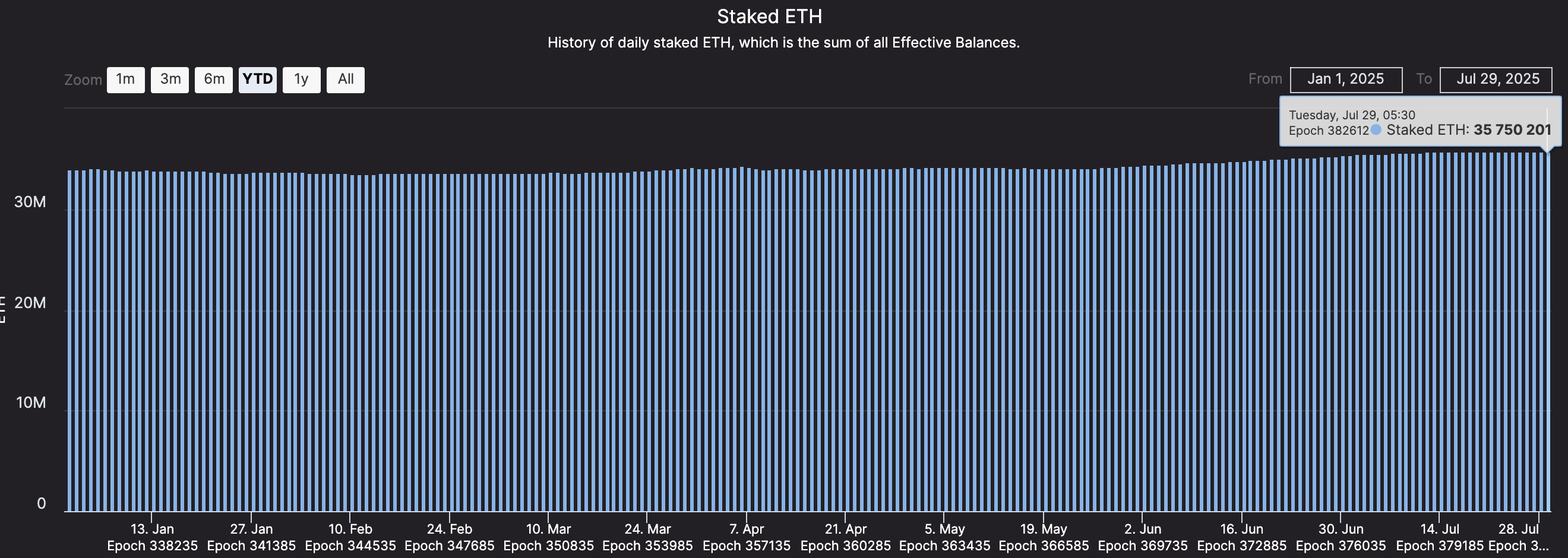
Staking means locking up ETH in the network to help secure it and earn rewards in return. Beacon Chain is Ethereum’s main staking layer that tracks all validators and staked ETH across the network.
SponsoredThe trend reached a high point on June 2, when inflows crossed 213,961 ETH in a single day, marking one of the largest monthly surges in 2025. And the rally was ongoing at that time.

Despite the network requiring 32 ETH to run a solo validator, which keeps this route limited to large holders, the rewards remain compelling. A standard validator could earn a net return of around $15,358 in one year, assuming the current ETH price of $3,795 and average growth rates.
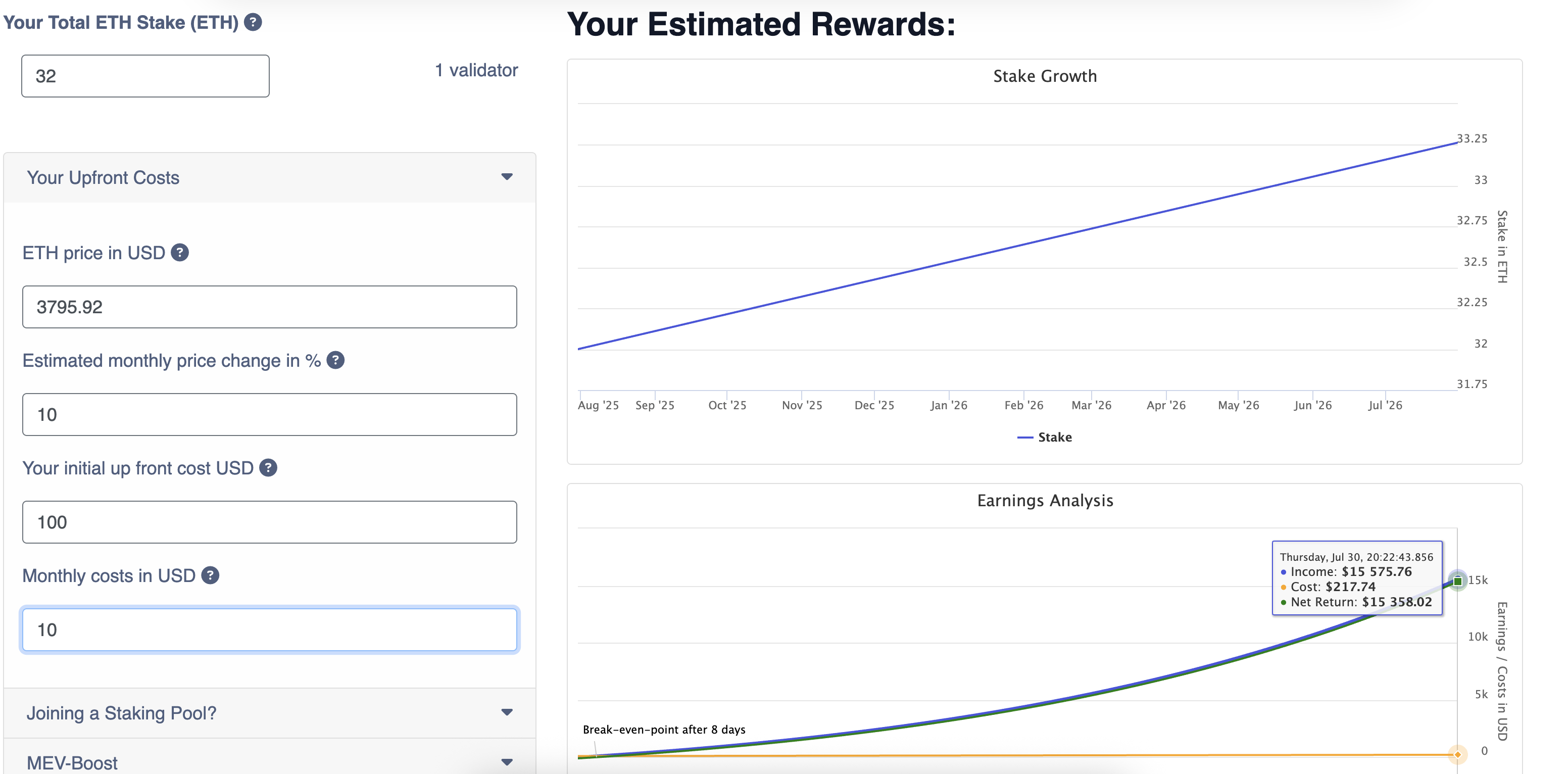
A validator is a computer node that validates transactions and earns rewards for doing so.
Liquid Staking Is Also Attractive Enough
For smaller players, liquid staking protocols such as Lido, Frax Finance, and Rocket Pool have opened doors to fractional staking. These platforms currently offer yields between 2.5 percent and 3.3 percent, with total deposits growing more than 100 percent this quarter, during the rally. (for most players).
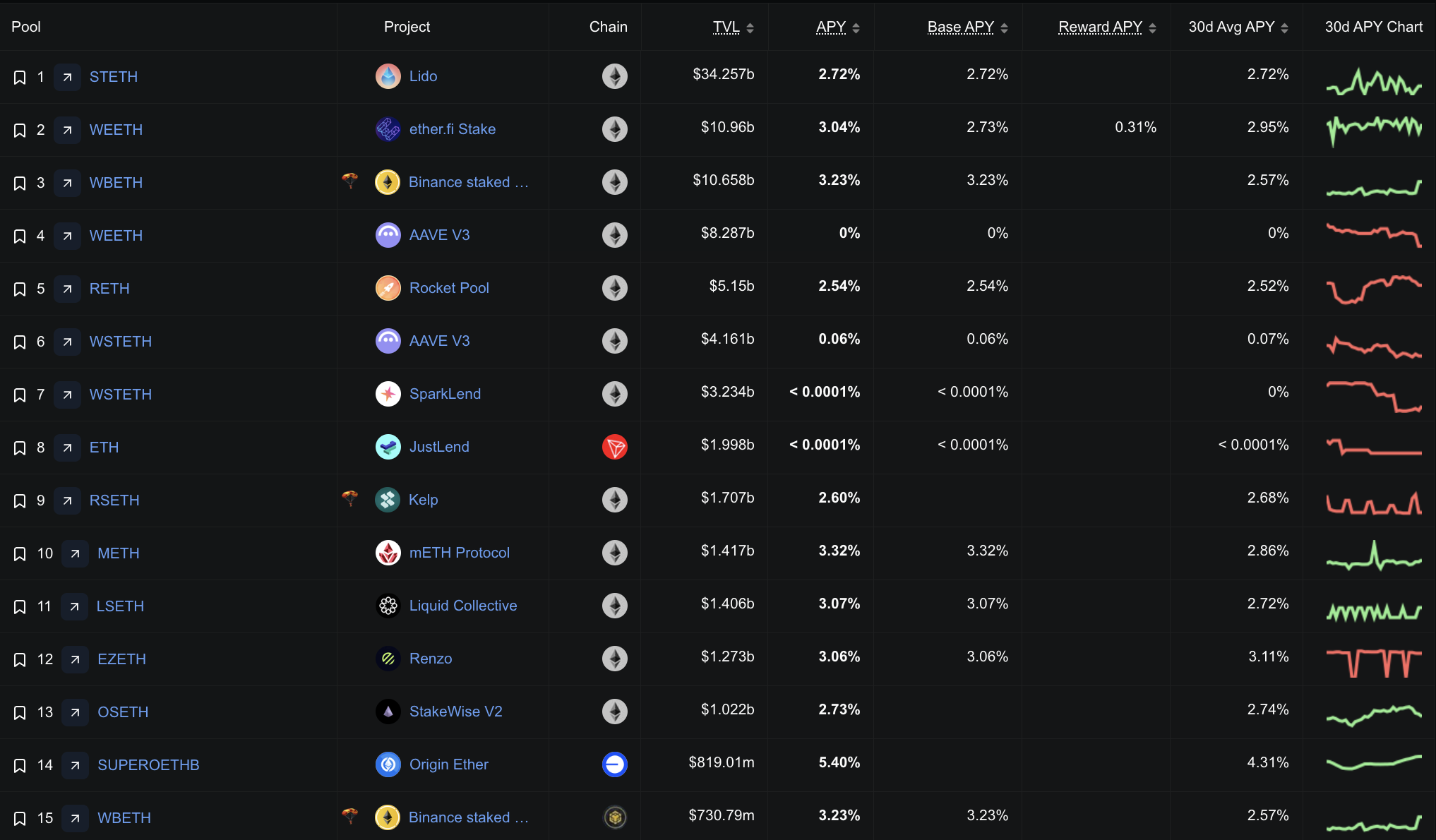
Liquid staking means you can stake any amount of ETH through a platform and still keep a tradable token representing your staked funds.
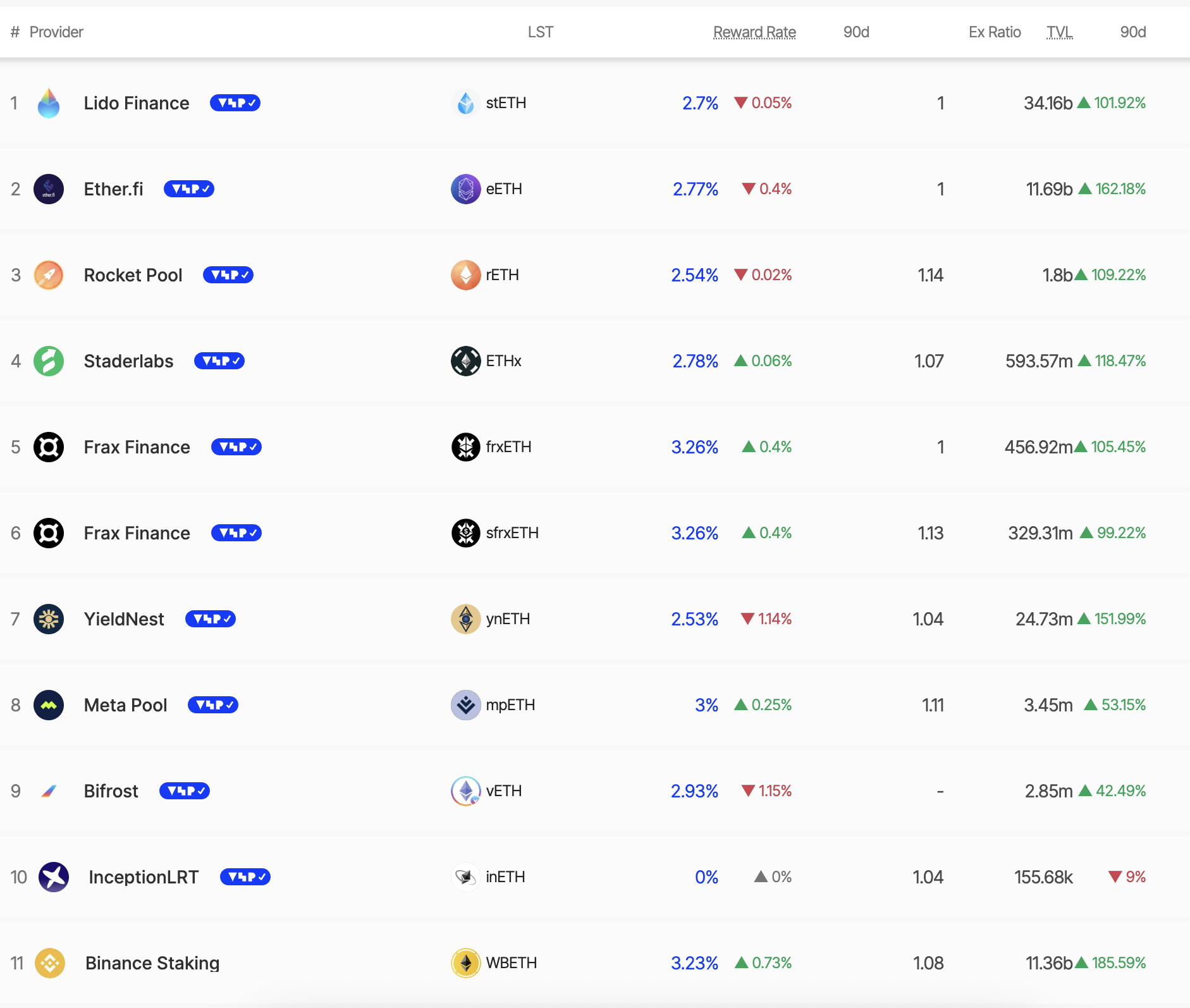
Note: Even though staking deposits have surged, individual yields on platforms like Lido have moved lower over time. Back in November 2022, Lido’s staking APY was around 8.16%, whereas today it stands at approximately 2.7%, despite a record-high total value locked (TVL). Yet, the 30-day APY yield curve remains in the green for many such players.
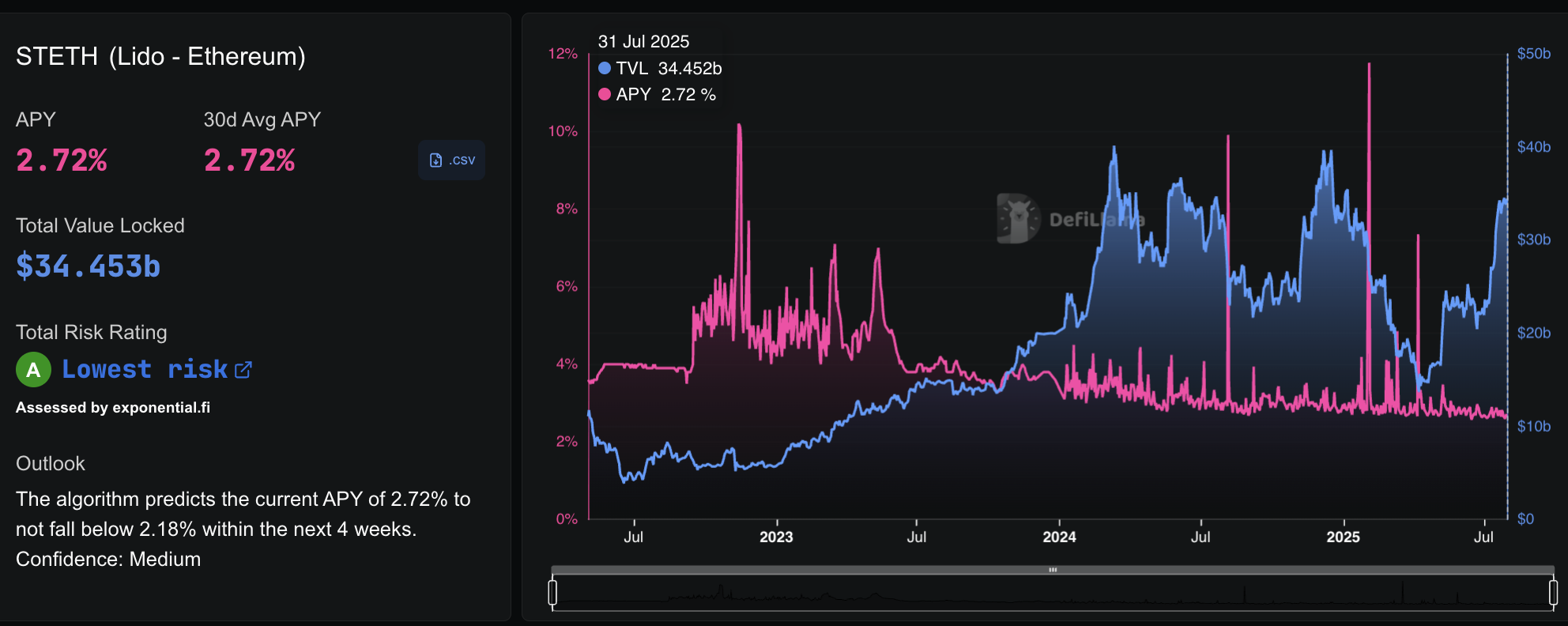
This drop happens because rewards are shared among more validators as more ETH is staked, and network fee activity has been calmer compared to past bull runs. In short, your total ETH rewards increase as you stake more, but the annual percentage yield on paper decreases as the staking pool grows and on-chain activity normalizes.
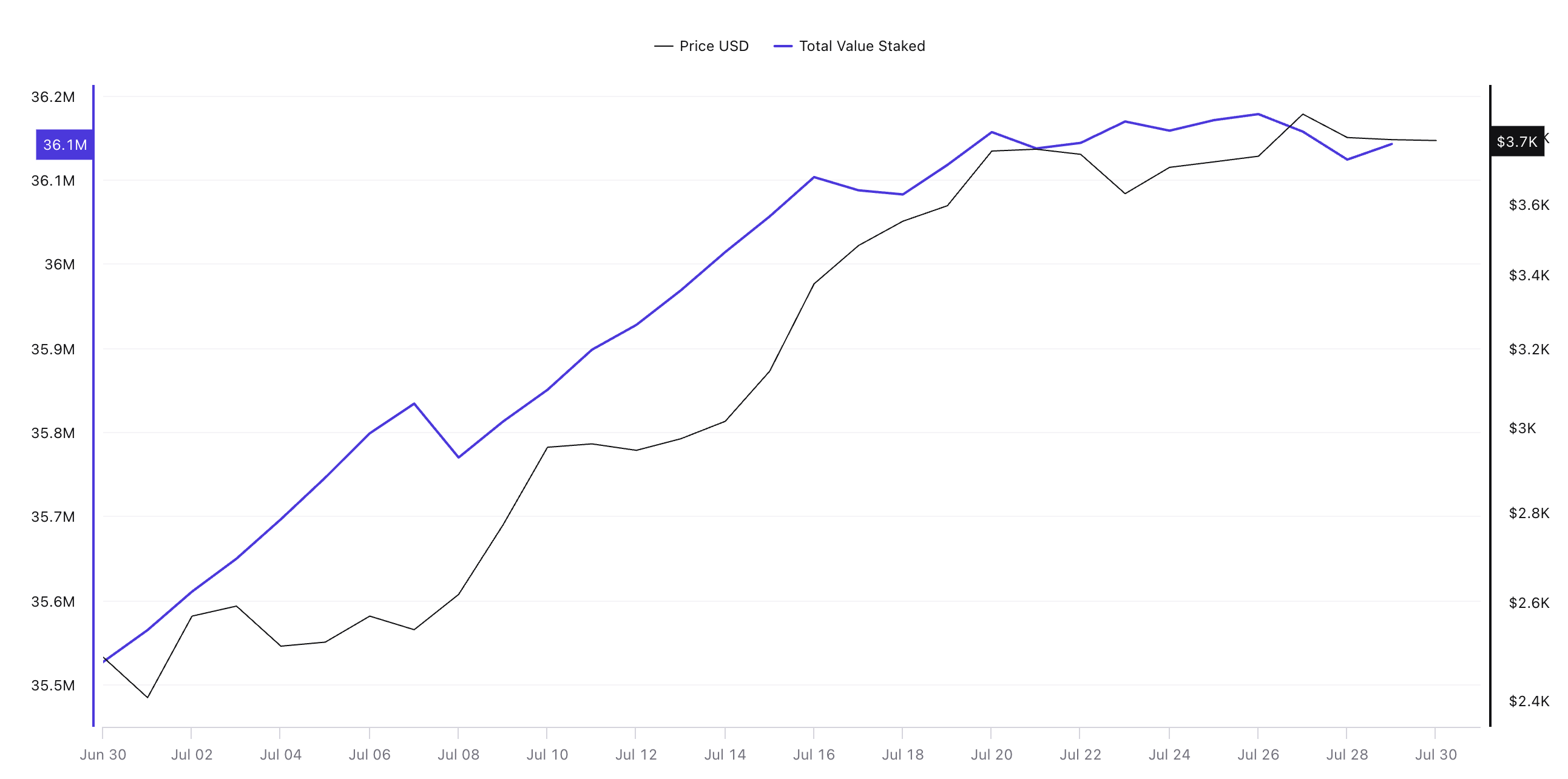
Across the network, total ETH staked has reached 36.1 million and continues to climb alongside price, reinforcing staking as the first and most natural yield play linked directly to Ethereum’s ongoing rally.
Restaking Booms as ETH Holders Chase Layered Yields
Ethereum’s July rally hasn’t just boosted staking; it’s unlocked a second wave of yield opportunities through restaking, where users take liquid staking tokens like stETH or eETH and redeploy them on EigenLayer-backed platforms to earn extra rewards.
Restaking means reusing your staked ETH tokens to secure additional services, earning extra rewards on top of normal staking income.
This layered approach allows holders to stack the usual 3% base staking yield with an additional 1.5%–2% from securing middleware services, effectively “double-dipping” on the same ETH.
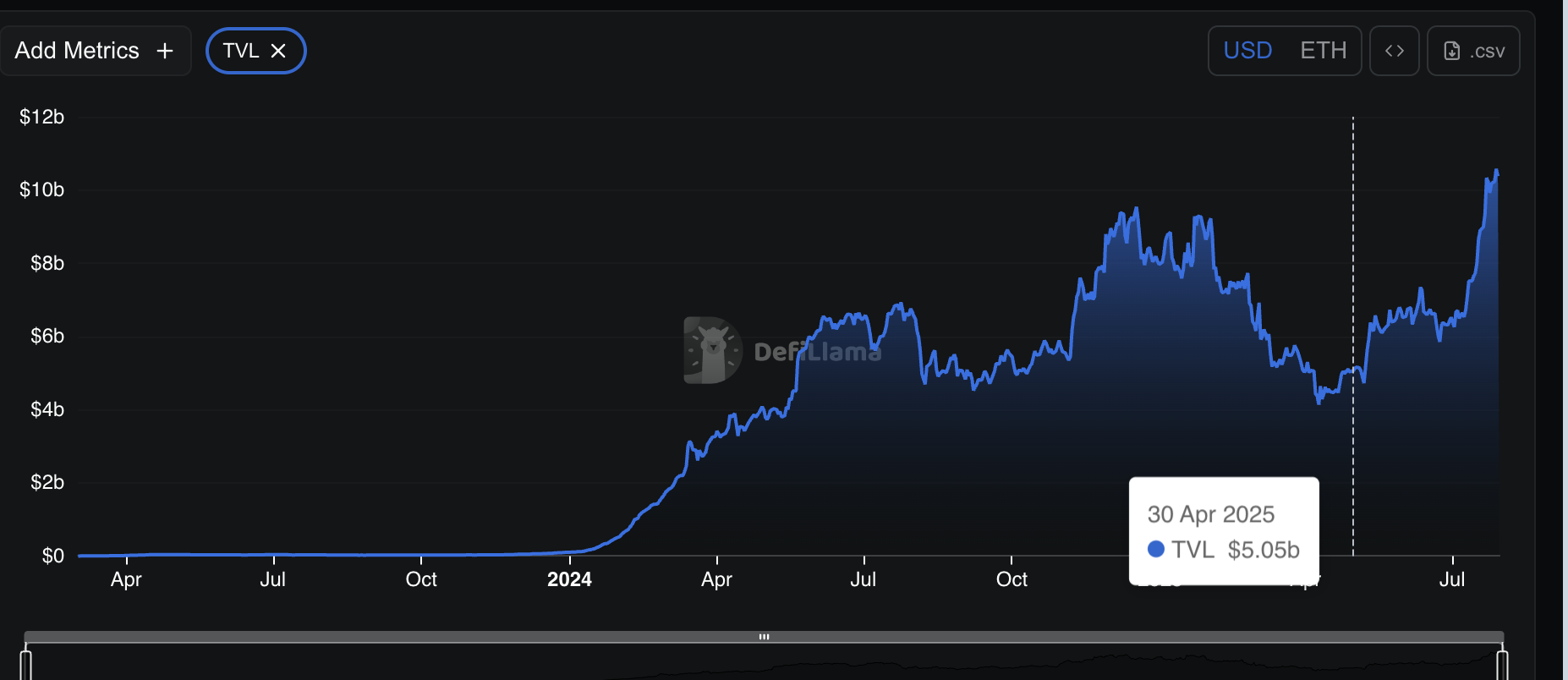
The numbers show how quickly this market is heating up. EtherFi’s Total Value Locked (TVL) nearly doubled, climbing from $5.5 billion on April 30 to $10.36 billion by July 30, while KelpDAO grew from $1.03 billion to $1.67 billion in the same period.
EigenLayer’s total DeFi TVL surged 120%, from roughly $8 billion to $18.34 billion, as capital rotated into this new yield layer.
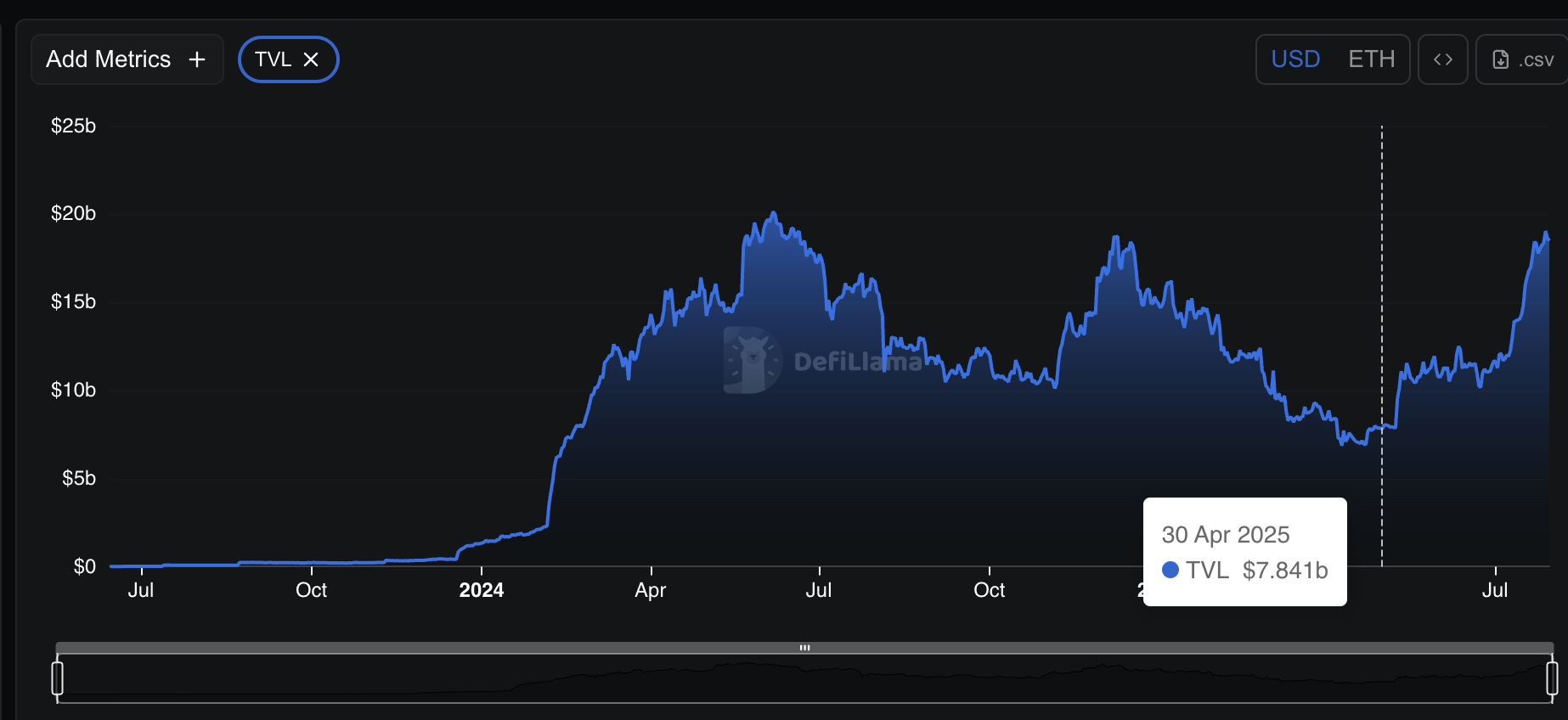
EigenLayer is a protocol that allows restaking of ETH to secure additional services on top of the Ethereum base chain, adding another yield layer for holders.
Even Figment led with 250,000 ETH in fresh inflows last month, showing institutional appetite is growing. Figment is a well-known institutional staking provider that helps large investors and funds delegate their ETH to validators without managing their own infrastructure.
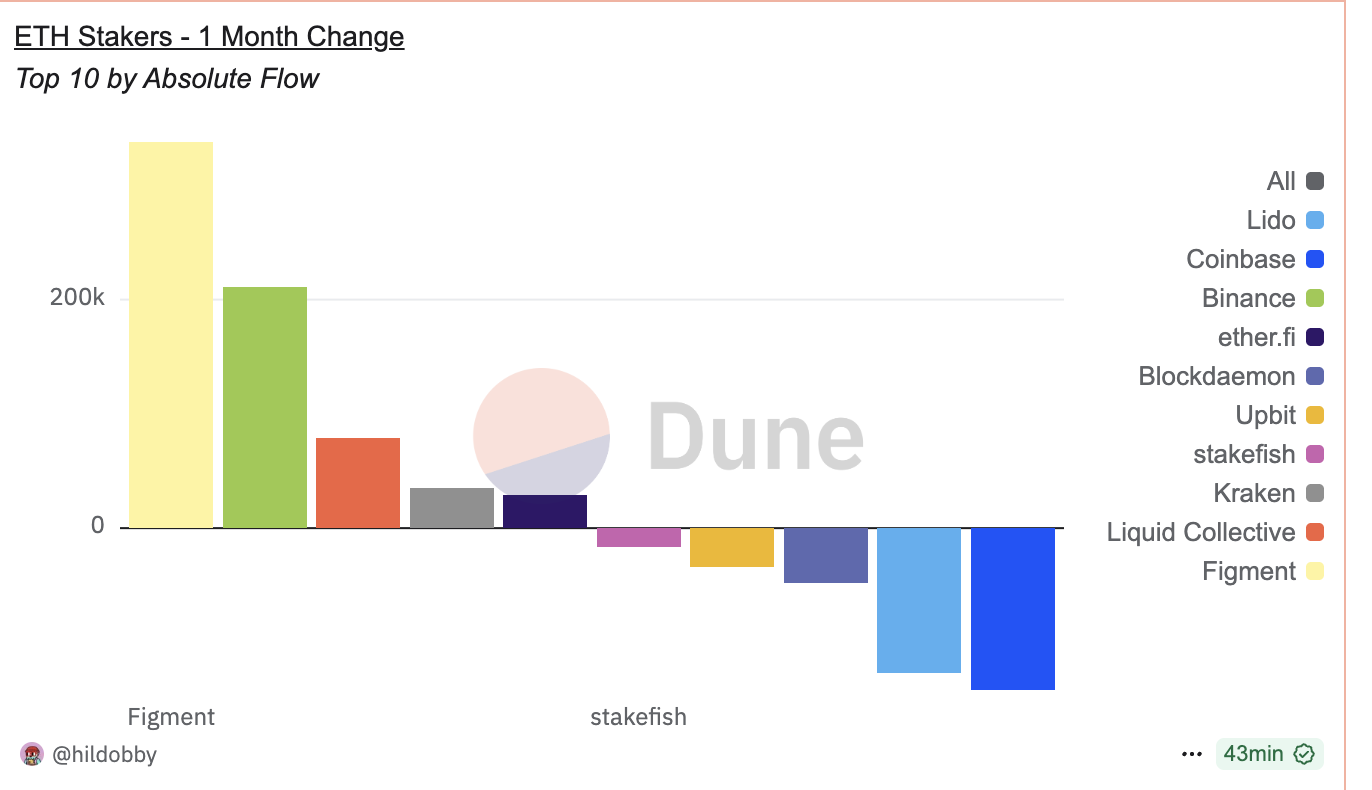
EtherFi, a key liquid restaking platform, now commands 6.5% of all staked ETH, rivaling centralized giants like Binance and Coinbase. Therefore, large CEX inflows might not always be that bad. Individuals could even be seeking staking and yield-generating opportunities, instead of adding to the sell pressure.
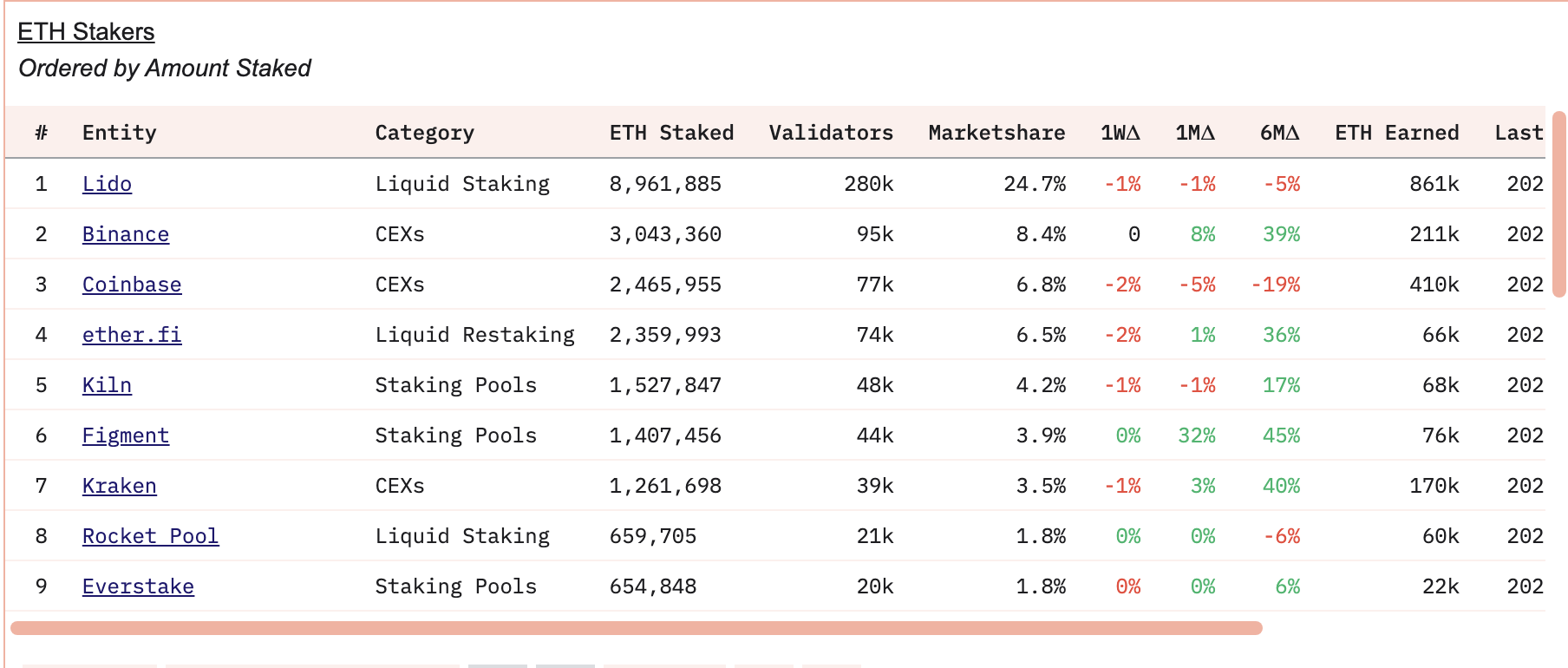
Synthetic Yield Plays Heat Up as Ethereum Rallies
Ethereum’s price surge hasn’t just attracted spot buyers; it has supercharged activity in synthetic yield platforms like Ethena. These platforms mint “synthetic dollars” backed by ETH, which can then be staked again to earn more yield.
They let ETH holders deposit Ethereum or staked Ethereum (stETH) to mint USDe, a synthetic dollar asset that can be staked further for layered yields. As more traders look to amplify returns, the flow into USDe has accelerated sharply.
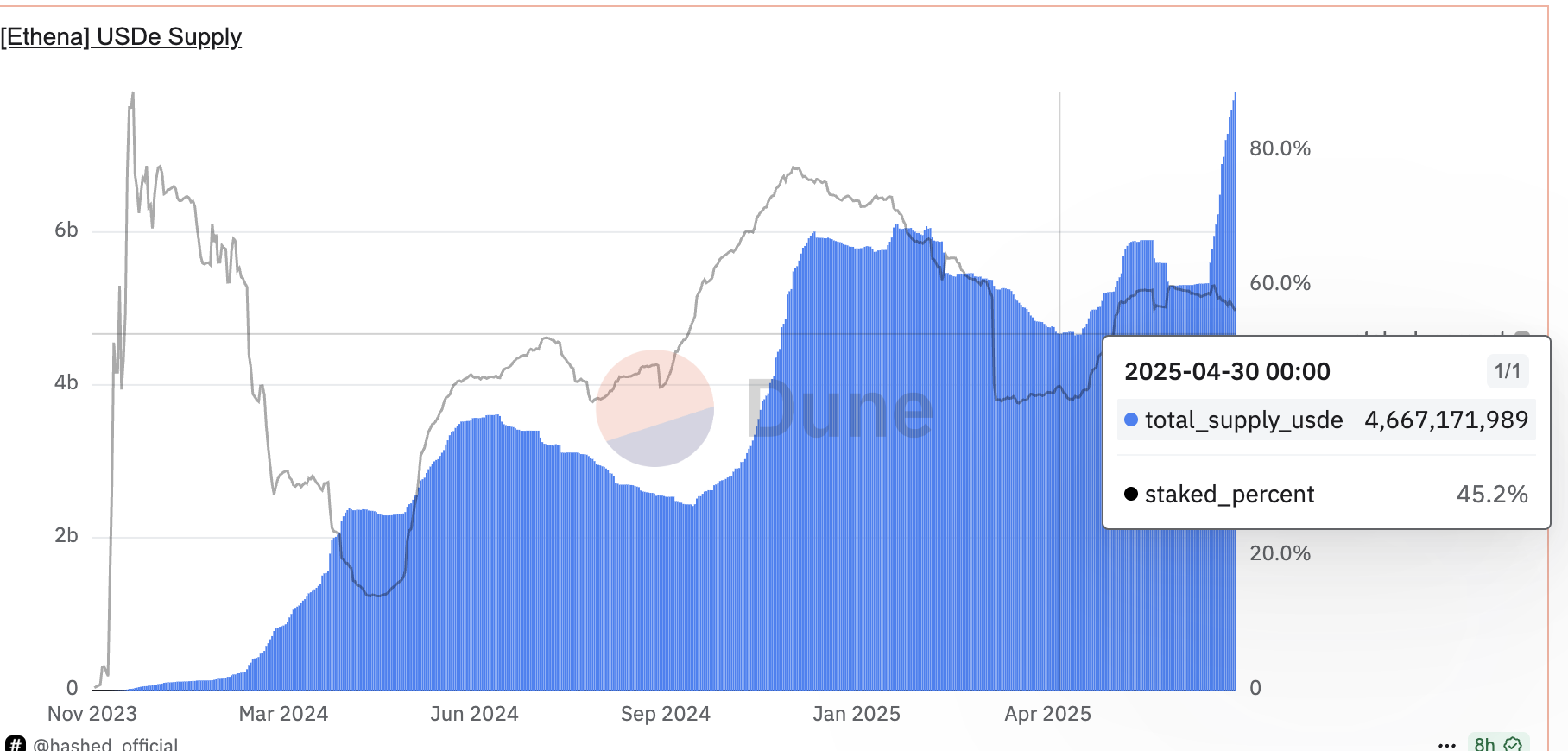
The total supply of USDe has grown nearly 80% since April 30, jumping from around 4.66 billion to over 8.03 billion. Alongside that, the percentage of USDe staked has climbed from about 45% to 56.3%, showing rising confidence in earning additional returns from these stable derivatives. Ethena’s own TVL (Total Value Locked) has risen to $8.1 billion, reflecting strong capital inflows.
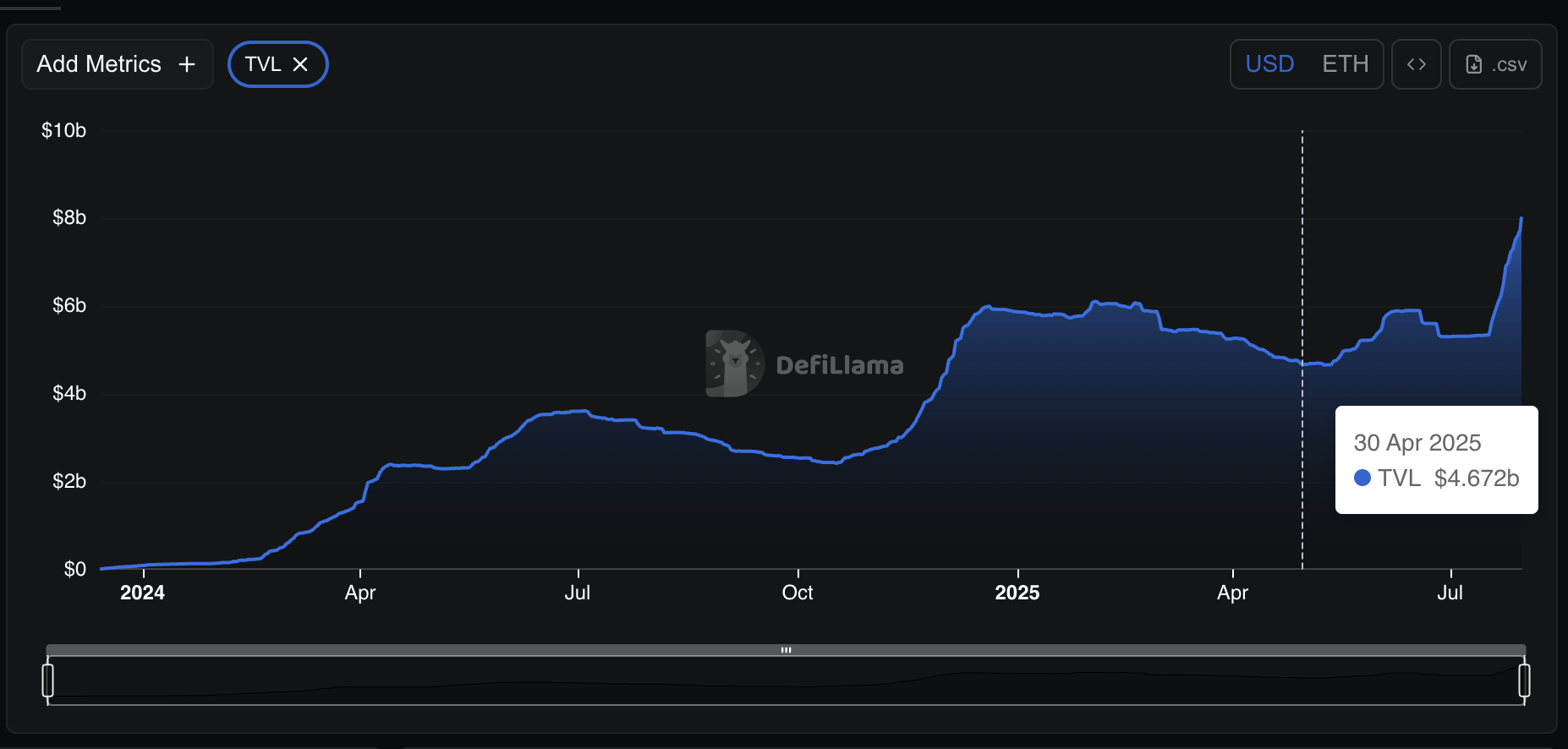
With current yields around 8.47% annual percentage yield, users can layer returns: base ETH staking yield, plus USDe minting rewards, plus staking USDe for extra income.
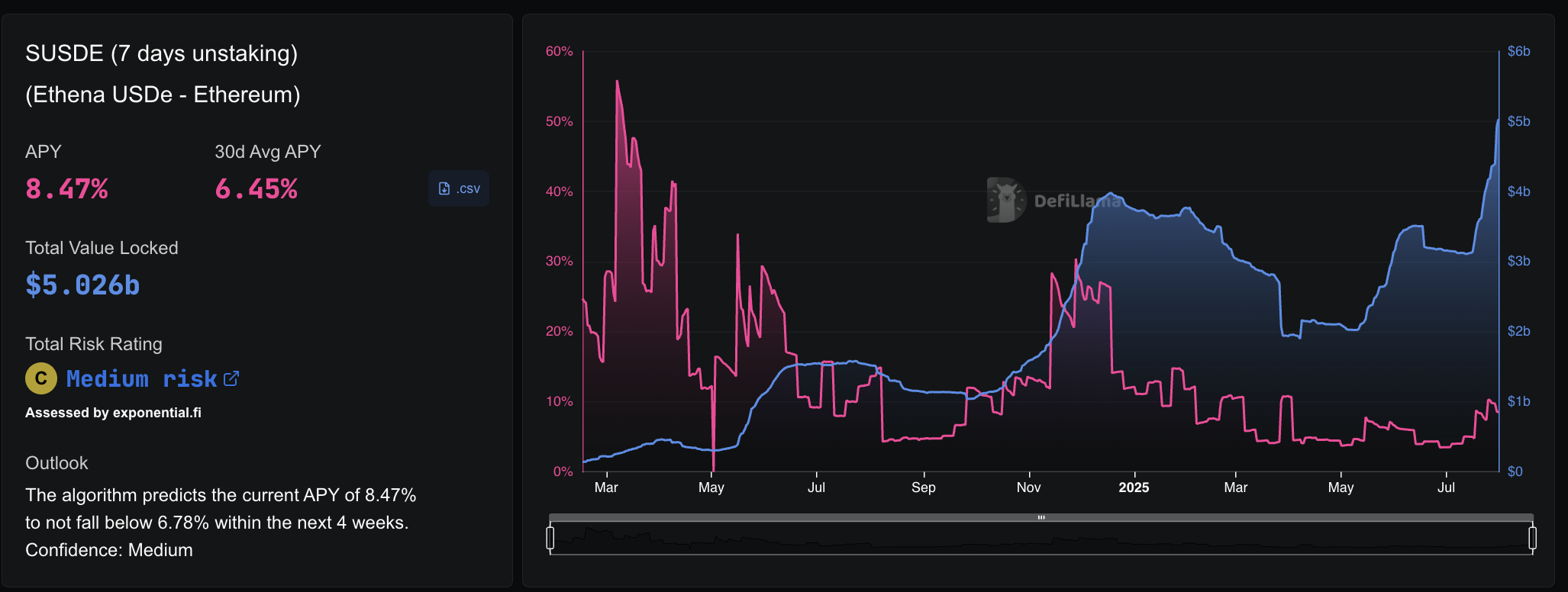
This multi-stack strategy becomes more attractive during a bullish Ethereum cycle, as higher prices fuel confidence and collateral growth across synthetic yield hubs.
Sponsored SponsoredFunding Rate Farming – Getting Paid While ETH Rallies
While many traders see the liquidation map as a fight between bulls and bears, funding rate farming paints a different picture.
On Bitget’s ETH-USDT perpetual market, open interest leans heavily long, with $5.95 billion in cumulative long leverage, stacked with 10x ($6.55 million) and 25x ($17.87 million) exposure. At first glance, the $2.86 billion in shorts seems like a bearish bet. In reality, many of these positions aren’t predicting a price drop; they’re there to collect funding payments from overleveraged longs.
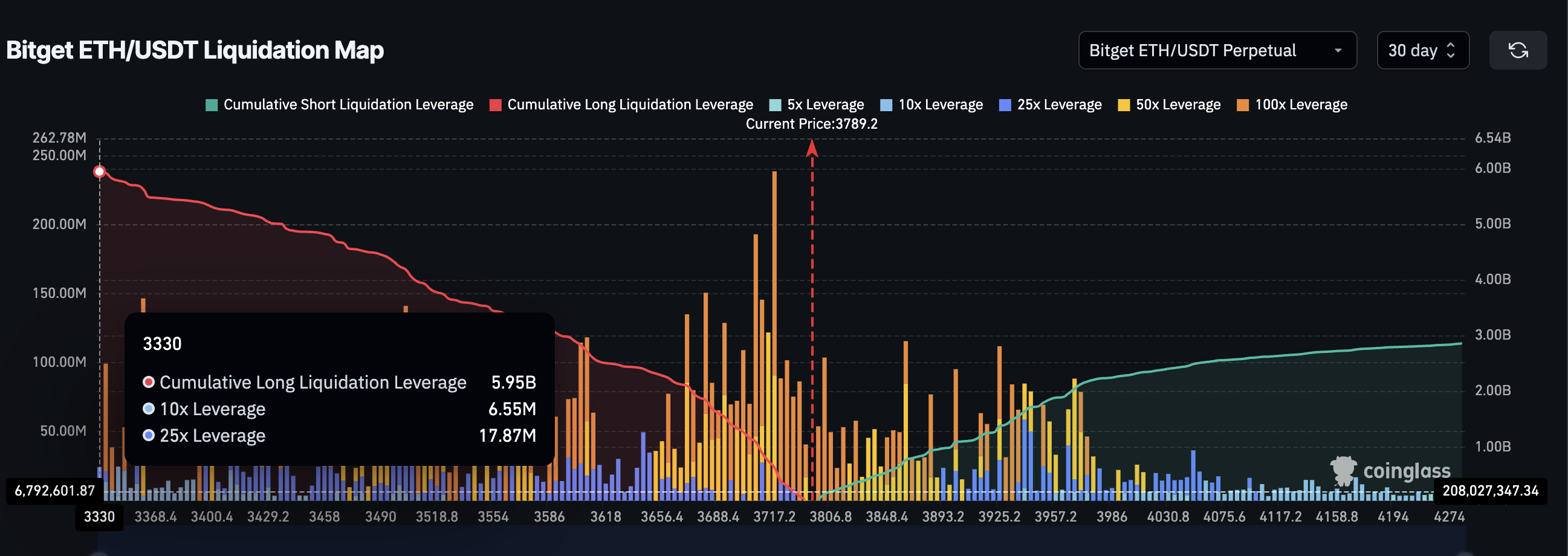
In perpetual futures, longs pay shorts a funding fee when buying pressure outweighs selling. And, during a strong rally, like ETH’s recent run toward $3,900, funding rates spike as traders pile in long with high leverage.
Smart money takes the opposite side, opening low-risk shorts just to earn a steady yield from this imbalance. With leverage mostly concentrated on the long side, shorts don’t need to “win the bet” on price; they get paid as long as demand for longs stays overheated.
This hidden yield play has become a staple for big players during trending markets, turning market euphoria into a passive income stream.
Lending and Liquidity Pools – The Low-Risk Yield Play
Not all smart money in this Ethereum rally is chasing high leverage or speculative mints. Some is quietly flowing into lending and liquidity pools that offer steadier, lower-risk returns.
Liquidity pools are collections of tokens locked in smart contracts that facilitate trading and earn fees for liquidity providers.
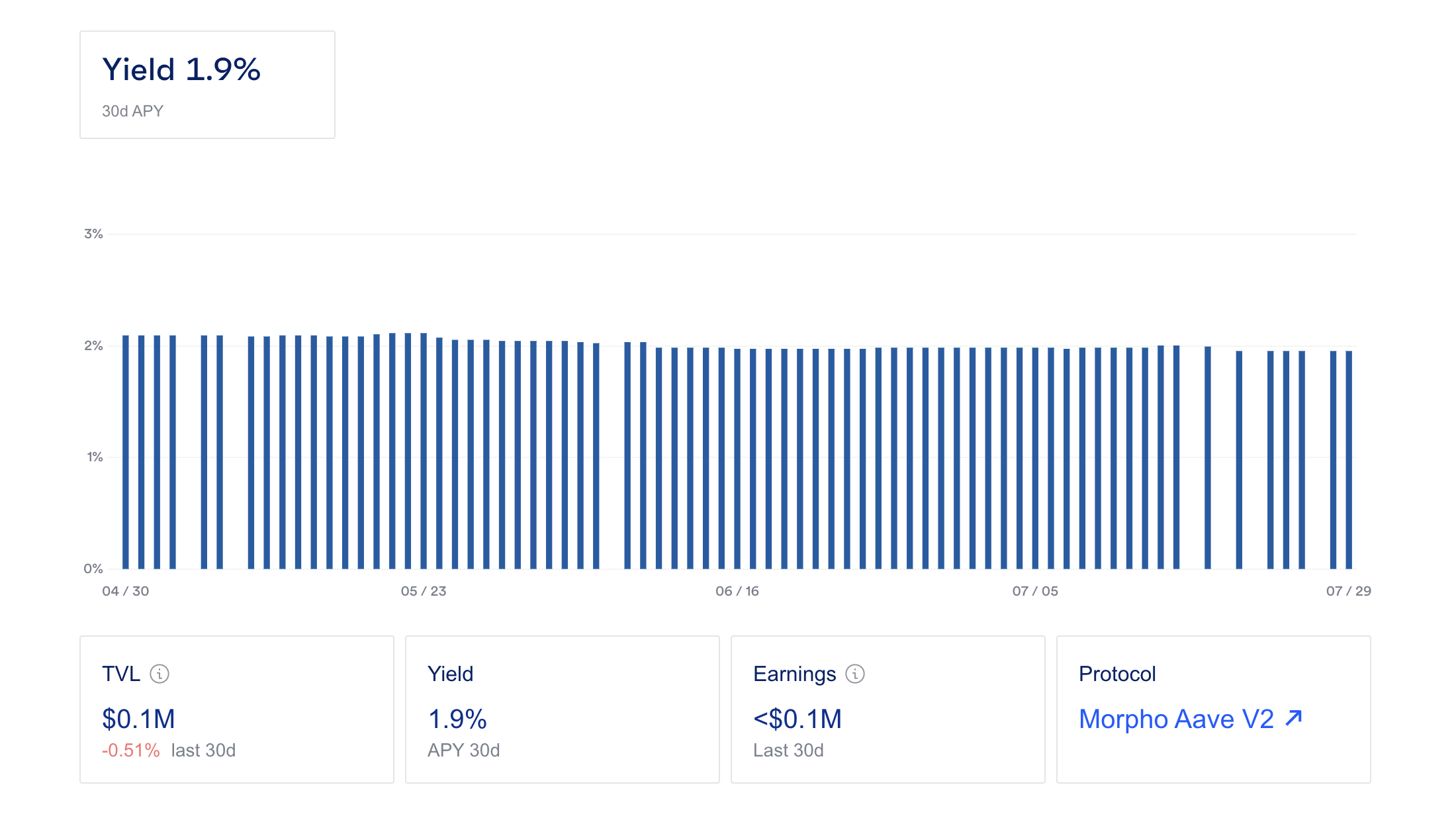
Platforms like Morpho Aave V2 are seeing deposits despite modest yields of 1.2–1.9% annualized, with risk levels rated “B,” making them safer bets for capital preservation.
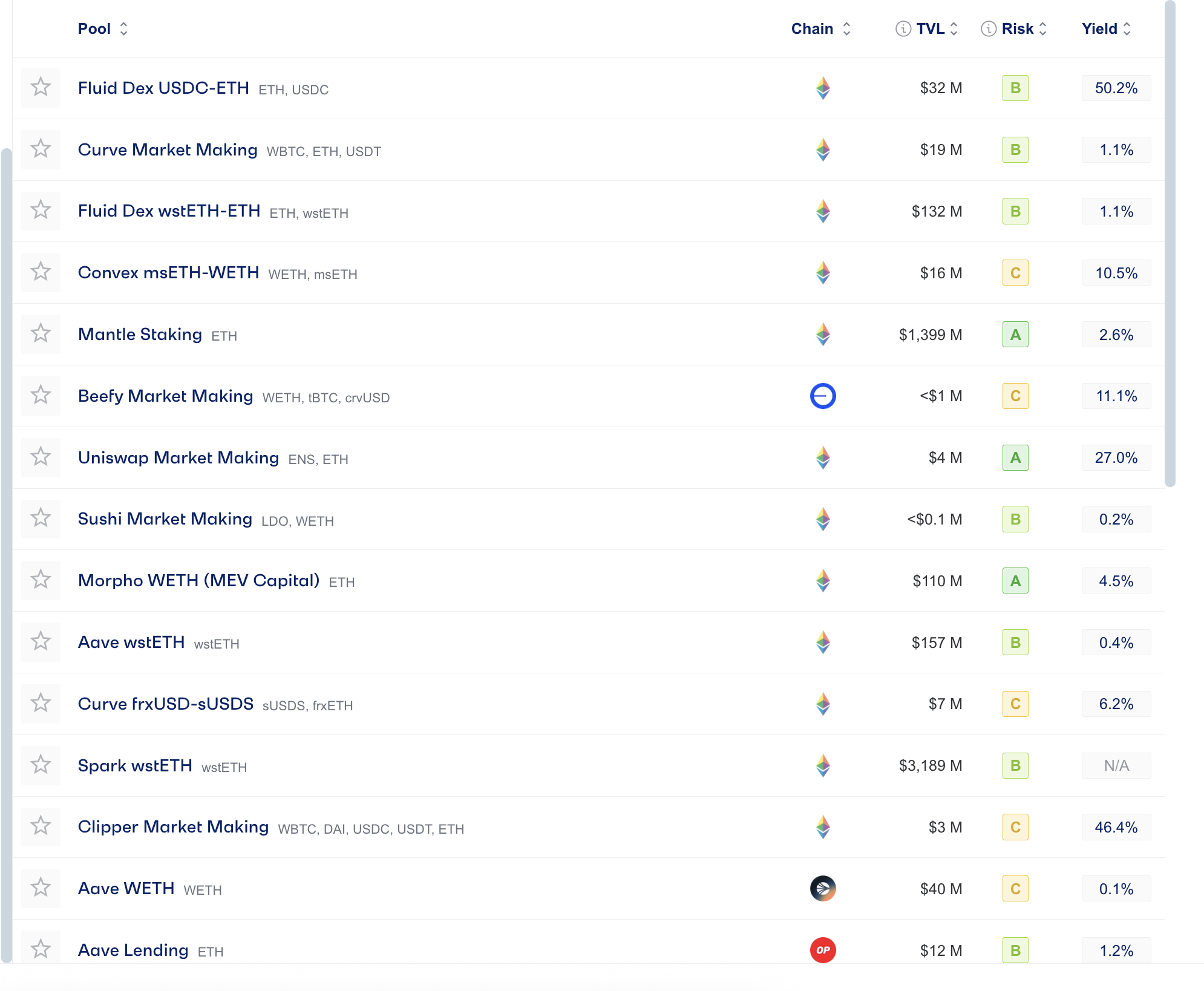
Other pools, including Fluid Dex USDC-ETH and Uniswap ENS-ETH, show higher yields of 27–50%, albeit with greater risk exposure. This spectrum of ETH-linked lending options highlights how yield seekers are diversifying, balancing safer Aave-style lending with riskier, high-return pool plays as Ethereum’s price rally attracts fresh liquidity.

